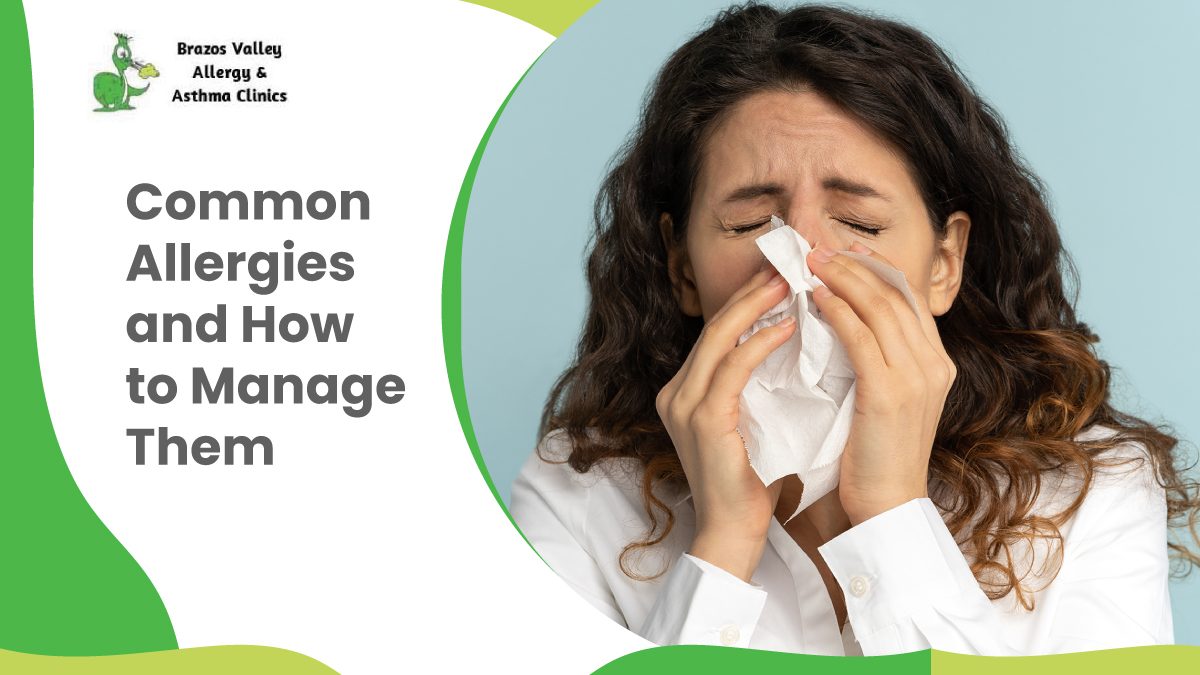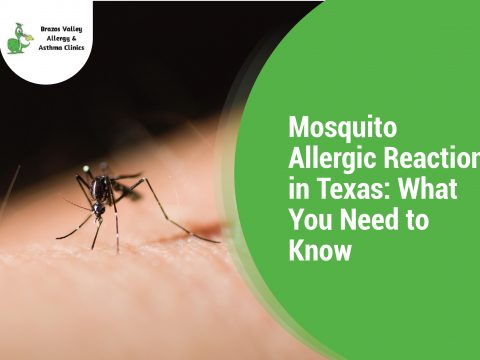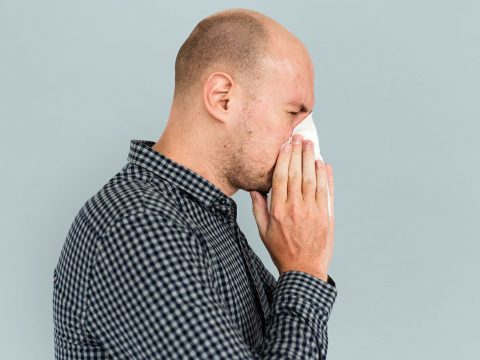- 979-485-9287
- office@bvallergy.com
-
 979-251-7804
979-251-7804
Common Allergies and How to Manage Them

Allergy Testing: Understanding the Different Methods
May 1, 2023
Foods to Avoid for Asthma and Allergy Sufferers
May 31, 2023Allergies are a common and often frustrating medical condition that affects anyone. From seasonal allergies to food allergies, there are many different types of allergies that you may experience. While modern medicine has no cure for allergies, the symptoms are manageable, helping you achieve a more comfortable life. This blog will discuss some of the most common allergies and provide management tips.
What Are the Common Types of Allergies?
Below is a compilation of the common allergy types that people worldwide often experience. Continue reading to know more.
Seasonal Allergies
Seasonal allergies occur during certain times of the year, typically during the spring and fall when plants release pollen into the air. The common symptoms of seasonal allergies include:
- Sneezing
- Runny nose
- Itchy eyes
- Congestion
How Do I Manage Seasonal Allergies?
It is essential to avoid exposure to pollen as much as possible. This can be done by staying indoors during peak pollen times, keeping windows closed, and using an air purifier with a HEPA filter. Allergy treatments like antihistamines and decongestants can also help manage symptoms.
Perennial Allergies
Perennial allergies are almost always a threat. You may experience the symptoms intermittently or may persist the whole year round. Constant exposure to allergic substances such as pet danders, molds, dust, or dust mites is typical of perennial allergies. The common symptoms of seasonal allergies are:
- Runny nose
- Watery and itchy eyes
- Itchy throat
- Headaches
- Congestion in your nose and chest
- Coughing or wheezing
- Fatigue
- Sneezing
How Do I Manage Perennial Allergies?
Aside from anti-allergy drugs, regularly cleaning your house is one of the best options to reduce the risks of triggering perennial allergies. Clean the dark areas of your home to prevent mold build-up. Moreover, change the fabrics in your bed or pillows to keep dust mites at bay.
Food Allergies
Food allergies are another common type of allergy affecting millions worldwide. Symptoms of food allergies range from mild to severe. It typically includes:
- Hives
- Swelling
- Difficulty breathing
- Anaphylaxis
The most common food allergens are:
- Milk
- Eggs
- Peanuts
- Tree nuts
- Soy
- Wheat
- Fish
- Shellfish
How Do I Manage Food Allergies?
The best way to manage food allergies is to avoid the food allergen altogether. This means carefully reading labels and asking questions about ingredients when eating out. In case of accidental exposure, carrying an epinephrine auto-injector is recommended – for anaphylaxis. Allergy medicines work well too.
Animal Dander Allergies
Animal allergies are caused by pet dander, made up of tiny flakes of skin, hair, and feathers that animals shed. Symptoms of pet allergies can include:
- Sneezing
- Runny nose
- Itchy eyes
It is essential to avoid exposure to animal dander as much as you can when dealing with allergies. You can achieve this by keeping pets out of certain areas of the home, using an air purifier with a HEPA filter, and washing hands after petting animals. If a pet is causing severe symptoms, it may be necessary to consider finding the pet a new home.
Insect Sting Allergies
Insects are everywhere. Unfortunately, some insects can cause allergic reactions. Most insect stings are harmless. However, certain types could trigger an allergic reaction. Most insect sting allergies come from bees, wasps, yellow jackets, or hornets. The common symptoms are:
- Itching
- Hives
- Redness
- Anaphylaxis
- Flushing
- Pain
- Swelling (in the stung area)
How Do I Manage Insect Sting Allergies?
The allergy symptoms of insect stings range from mild to severe. Some may consider it a minor nuisance, while others may experience devastating effects. Anti-allergy over-the-counter medicines work well in reducing symptoms. Allergy specialists also recommend using topical anti-allergy meds to alleviate the pain and swelling.
NOTE: Anaphylaxis is a severe allergic reaction from insect stings. It can be life-threatening if left untreated. The common symptoms are:
- Collapsing or losing consciousness
- Lightheadedness
- Clammy skin
- Breathing difficulties
- Palpitations
- Wheezing
- Confusion and anxiety
Immediate medical intervention plays a crucial role during an anaphylaxis attack. In such cases, it would be best to call 911 or go to the nearest medical facility. Injecting a dose of epinephrine is also a key factor. However, the administration should be handled by a trained professional.
You can also try home remedies if you cannot contact your allergist. The section below will discuss the ideal home remedies for allergies.
Home Remedies for Allergies
Many people prefer to use home allergy remedies to relieve their symptoms. This section will discuss some of the most effective ways to manage allergies at home.
Neti Pot
A neti pot is a tiny, teapot-like device to rinse the nasal passages. This can help remove allergens and reduce inflammation, relieving allergy symptoms. To use a neti pot:
- Combine a teaspoon of salt with warm water, pour the solution into the neti pot, and tilt your head to the side.
- Insert the spout into your upper nostril and flow the solution through your nasal passages.
- Repeat on the other side.
Local Honey
Local honey is believed to help alleviate allergy symptoms by introducing small amounts of allergens into the body. The theory is that this helps the immune system to tolerate allergens over time.
Essential Oils
Essential oils like lavender, peppermint, and eucalyptus have anti-inflammatory and antihistamine properties, which can help to reduce allergy symptoms. Mix essential oils in a diffuser or combine them with carrier oils such as coconut or almond oil and apply them topically to the skin.
Apple Cider Vinegar
Apple cider vinegar contains antihistamine properties, which can help reduce allergy symptoms. You can combine one teaspoon of apple cider vinegar with a glass of water. Drink it or apply it directly to the skin.
Quercetin
Quercetin is a flavonoid found in fruits and vegetables. It contains anti-inflammatory and antihistamine properties, which can help to relieve allergy symptoms. You can take quercetin supplements or eat foods rich in quercetin, such as apples, berries, and onions.
NOTE: Although these home remedies are safe and efficient, you should never use them to replace the medical method. Moreover, talking to your allergist before trying any of the above-mentioned treatments is crucial. Your doctor can guide you with the proper steps in using home remedies for allergies.
Begin Your Allergy-Free Journey With Us
Allergies can be frustrating and often uncomfortable. While there is no permanent cure for allergies, there are effective methods to manage your symptoms. Whether you are dealing with seasonal allergies, food allergies, dust allergies, or pet allergies, there are strategies you can use to reduce exposure to allergens and manage your symptoms.
Remember, if your allergies are causing significant problems, the allergy doctors at Brazos Valley Allergy & Asthma Clinics are here for you. We provide safe and efficient allergy treatment options based on your personal needs.
Our board-certified allergist Dr. Paul Jantzi offers accurate allergy testing to provide the appropriate treatment plan you deserve. We manage common allergies using evidence-based methods with years of experience and a high success rate. You are on the right page if you are searching for an “allergy specialist” near me.
You can book an appointment here.




